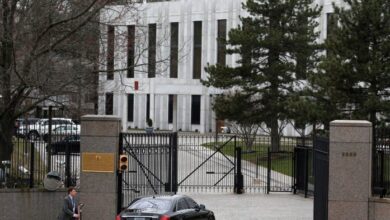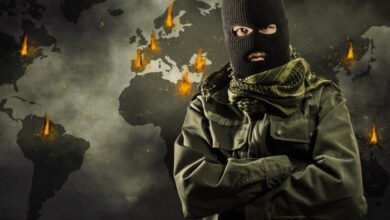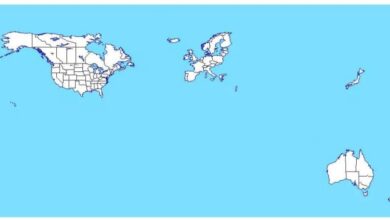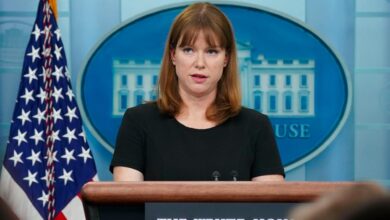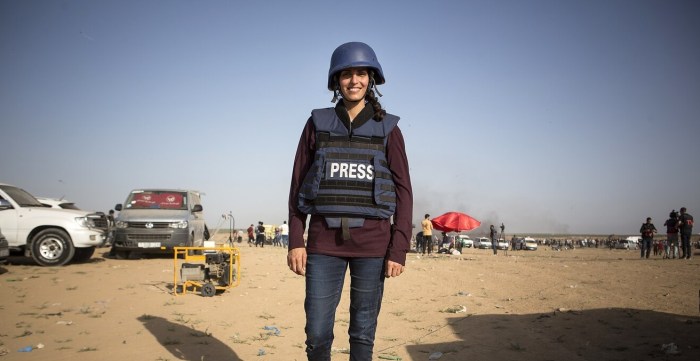
War Needs Good Public Relations: Shaping Perceptions of Conflict
War needs good public relations. This statement, while seemingly paradoxical, reveals a critical truth about the nature of conflict in the modern age. From ancient times to the digital era, propaganda has played a crucial role in shaping public opinion, rallying support for war, and influencing the course of history.
This blog delves into the intricate relationship between war and public relations, exploring the historical evolution of propaganda, its psychological impact, and the ethical dilemmas it presents. We’ll examine how media, from traditional newspapers to social media, has become a battleground for shaping narratives and influencing perceptions of conflict.
By understanding the power of propaganda, we can better navigate the complexities of modern warfare and engage in critical thinking about the information we consume.
Historical Examples of War Propaganda
War propaganda is a powerful tool used by governments and militaries to influence public opinion and support for war efforts. Throughout history, various propaganda campaigns have been employed, with varying degrees of success. This section will explore some notable examples of war propaganda, analyzing their tactics and strategies, and examining their impact on public opinion.
War, unfortunately, needs good public relations to maintain support. The devastating impacts of conflict, like the destruction of ecosystems and the release of harmful pollutants, often get overshadowed by the narrative of heroism and national security. It’s crucial to remember that the long-term consequences of war extend far beyond the battlefield, and understanding the effects on the environment is essential for building a more sustainable future.
If we truly want to prevent future conflicts, we need to have honest conversations about the full cost of war, including its environmental toll.
Successful War Propaganda Campaigns, War needs good public relations
Successful war propaganda campaigns are characterized by their ability to effectively persuade the public to support the war effort. They often employ a combination of emotional appeals, persuasive rhetoric, and carefully crafted imagery to achieve their objectives.
- World War I: The “Lusitania” IncidentThe sinking of the RMS Lusitania by a German U-boat in 1915 was a pivotal moment in shaping public opinion in the United States. The incident, which resulted in the deaths of over 100 American civilians, was heavily publicized by Allied propaganda.
The propaganda portrayed Germany as a ruthless aggressor and the sinking as a deliberate act of barbarism. This narrative effectively swayed American public opinion against Germany, paving the way for the United States’ entry into World War I.
- World War II: The “Rosie the Riveter” CampaignDuring World War II, the United States launched the “Rosie the Riveter” campaign to encourage women to join the workforce and contribute to the war effort. The campaign featured iconic imagery of strong, capable women working in factories, dismantling traditional gender roles and inspiring women to take on traditionally male-dominated jobs.
This campaign was highly successful in mobilizing women to fill critical roles in the war industry, contributing significantly to the Allied victory.
- The Cold War: The “Iron Curtain” SpeechIn 1946, Winston Churchill delivered his famous “Iron Curtain” speech, which warned of the growing Soviet threat and the need for a united Western response. Churchill’s powerful rhetoric and evocative imagery effectively framed the Cold War as a struggle between democracy and communism, rallying support for the West and contributing to the escalation of the Cold War.
Just like a war needs good public relations to gain support, so too do initiatives like some regional free trade agreements need to be presented in a way that highlights their benefits and addresses potential concerns. After all, people are more likely to embrace change when they understand its purpose and feel confident in its outcome.
A successful PR campaign can be the difference between a successful negotiation and a stalemate.
Unsuccessful War Propaganda Campaigns
Not all war propaganda campaigns are successful. Some campaigns fail to resonate with the public, often due to ineffective messaging, unrealistic promises, or a disconnect between the propaganda and the reality of the situation.
- The Vietnam War: The “Hearts and Minds” CampaignThe United States’ “Hearts and Minds” campaign during the Vietnam War aimed to win over the Vietnamese people through social programs and economic development. However, the campaign was ultimately unsuccessful, failing to address the underlying political and social issues driving the conflict.
The campaign’s ineffectiveness contributed to the growing anti-war sentiment in the United States, ultimately leading to the withdrawal of American troops.
- The Iraq War: The “Weapons of Mass Destruction” ClaimThe Bush administration’s justification for the 2003 invasion of Iraq was based on the claim that Saddam Hussein’s regime possessed weapons of mass destruction. However, no such weapons were ever found, leading to widespread public skepticism and undermining the legitimacy of the war.
This failure to substantiate the claims made in the propaganda campaign contributed to the war’s unpopularity and the erosion of public trust in the government.
Psychological Impact of War Propaganda
War propaganda is a powerful tool used to influence public opinion and mobilize support for a particular cause, often during wartime. It operates by manipulating psychological mechanisms and exploiting human emotions to achieve its objectives. Understanding the psychological impact of war propaganda is crucial for comprehending its influence on individual and collective behavior during conflict.
Influence of Fear, Patriotism, and Nationalism
Propaganda often leverages powerful emotions like fear, patriotism, and nationalism to sway public opinion. Fear can be used to create a sense of urgency and justify military action, while patriotism and nationalism can be invoked to foster a sense of unity and shared purpose.
- Fear:Propaganda often depicts the enemy as a threat to the nation’s security and way of life, generating fear and anxiety among the population. This fear can motivate people to support the war effort, believing that it is necessary to protect their own safety and interests.
Examples include the “yellow peril” propaganda used during World War II, which portrayed Japan as a dangerous and aggressive threat to Western civilization.
- Patriotism:War propaganda often appeals to national pride and patriotism, portraying the nation as virtuous and noble, while the enemy is depicted as evil and threatening. This tactic aims to create a sense of unity and shared purpose, motivating people to support the war effort and sacrifice for their country.
- Nationalism:Propaganda often promotes a sense of national superiority and unity, emphasizing the nation’s unique identity and its superiority over other nations. This can lead to a sense of entitlement and justification for military action, particularly when used to promote the idea of a “chosen people” or a “manifest destiny.”
The Role of Media in War Propaganda
The media has always played a crucial role in shaping public opinion, and during times of war, its influence becomes even more significant. War propaganda, often disseminated through various media platforms, aims to manipulate public perception and mobilize support for a particular cause.
This section will explore the evolution of media platforms used for war propaganda, analyze the impact of traditional and social media on public opinion, and discuss the role of censorship and media control in wartime.
Evolution of Media Platforms
The media landscape has evolved significantly throughout history, and each new platform has offered new opportunities for war propaganda. Early examples include pamphlets, posters, and newspapers during World War I, followed by radio broadcasts during World War II. These platforms allowed governments to reach a wider audience and control the narrative of the war.
- Early Forms:Pamphlets, posters, and newspapers were essential tools for disseminating propaganda during World War I. These platforms allowed governments to spread messages of patriotism, demonize the enemy, and justify their actions. For example, the British government used posters to encourage enlistment, while the German government used pamphlets to spread misinformation about the war.
- Radio Broadcasts:The advent of radio in the 1920s revolutionized propaganda dissemination. Radio broadcasts allowed governments to reach a much wider audience and deliver messages directly into people’s homes. During World War II, both Allied and Axis powers used radio to spread propaganda and influence public opinion.
For example, the Nazi government used radio to promote its ideology and demonize its enemies, while the Allied powers used radio to broadcast news and morale-boosting messages.
- Television:The introduction of television in the 1950s further expanded the reach of propaganda. Television provided a more powerful and engaging medium for delivering propaganda messages. During the Vietnam War, both the United States and North Vietnam used television to shape public opinion and justify their actions.
The iconic images of the war, often broadcast on television, had a profound impact on public perception.
- Social Media:The rise of social media in the 21st century has created new challenges for propaganda control. Social media platforms allow for rapid and widespread dissemination of information, making it difficult for governments to control the narrative. During the 2003 invasion of Iraq, both the United States and Iraq used social media to spread their own versions of events.
In more recent conflicts, such as the Syrian Civil War, social media has been used to spread propaganda, incite violence, and manipulate public opinion.
Impact of Traditional and Social Media
Traditional media platforms, such as newspapers, radio, and television, have historically played a significant role in shaping public opinion during wartime. These platforms provided the primary source of information for most people, and their coverage of the war could significantly influence public perception.
For example, during World War II, the American government used radio broadcasts to keep the public informed about the war effort and maintain morale.
- Traditional Media:Newspapers, radio, and television have long been used to shape public opinion during wartime. These platforms can provide a powerful platform for disseminating propaganda messages and influencing public perception. Governments often use these platforms to control the narrative of the war, present their side of the story, and demonize the enemy.
For example, during World War II, the Nazi government used radio broadcasts to promote its ideology and spread misinformation about the war.
- Social Media:Social media platforms have become increasingly important in shaping public opinion during wartime. Social media allows for rapid and widespread dissemination of information, making it difficult for governments to control the narrative. Social media can be used to spread propaganda, incite violence, and manipulate public opinion.
For example, during the 2003 invasion of Iraq, both the United States and Iraq used social media to spread their own versions of events.
Censorship and Media Control
Censorship and media control are common tactics used by governments during wartime to limit the flow of information and control the narrative. Governments may censor news reports, restrict access to certain websites, or even arrest journalists who criticize the war effort.
These measures aim to prevent the public from receiving information that could undermine support for the war.
War, unfortunately, often thrives on a well-crafted narrative. It’s a sad truth that the destruction and suffering it brings can be masked by carefully constructed public relations campaigns. This begs the question: how much better could the world be if we directed that energy and resources towards positive endeavors?
Think about the vast amount of wasted wealth, capital, labor, and resources that could be channeled into building a brighter future. If we truly value peace and progress, we need to acknowledge the insidious power of propaganda and prioritize solutions that foster genuine understanding and cooperation.
- Censorship:Governments often use censorship to control the flow of information during wartime. This can include censoring news reports, restricting access to certain websites, or even arresting journalists who criticize the war effort. Censorship aims to prevent the public from receiving information that could undermine support for the war.
- Media Control:Governments may also attempt to control the media directly. This can include using propaganda to shape public opinion, influencing news coverage, or even shutting down independent media outlets. Media control aims to ensure that the public only receives information that supports the government’s agenda.
The Ethics of War Propaganda: War Needs Good Public Relations
War propaganda, a powerful tool used to influence public opinion during wartime, raises significant ethical concerns. While it can be used to rally support for a cause, promote national unity, and motivate soldiers, it also carries the potential for manipulation, deception, and the perpetuation of harmful stereotypes.
The Potential for Manipulation and Deception
Propaganda, by its very nature, aims to persuade audiences to adopt a particular viewpoint. This often involves selective presentation of information, exaggeration, and the use of emotional appeals to sway public opinion. The ethical implications of this approach are undeniable, as it can lead to the distortion of truth and the manipulation of individuals’ beliefs and actions.
Historical and Contemporary Debates
The ethical use of propaganda in warfare has been a subject of debate for centuries. During World War I, the use of propaganda by both sides was widespread and often highly effective. The horrors of the war led to a reassessment of the ethical implications of propaganda, with many arguing that its use should be restricted or even banned.
“Propaganda is the executive arm of the invisible government.”
Edward Bernays
In contemporary times, the use of propaganda has become increasingly sophisticated and pervasive. The rise of social media and the internet has created new avenues for the dissemination of propaganda, making it more difficult for individuals to discern truth from falsehood.
The use of propaganda by authoritarian regimes and terrorist organizations has also raised concerns about its potential to incite violence and undermine democratic values.
The Impact of War Propaganda on International Relations
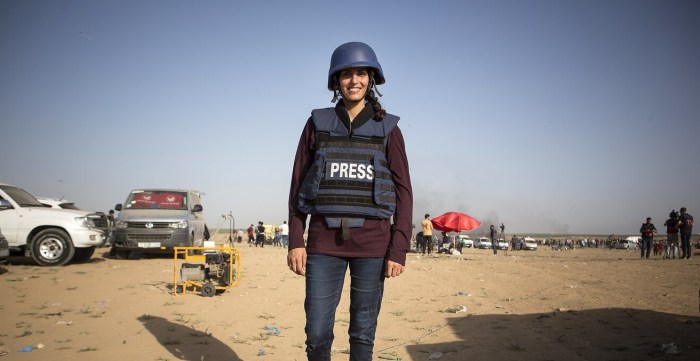
War propaganda, a powerful tool used to manipulate public opinion and influence behavior, has a profound impact on international relations. It shapes perceptions of conflict, influences diplomatic relations, and fuels international alliances. This essay will delve into the multifaceted ways in which war propaganda shapes international interactions, examining its impact on public opinion, diplomatic relations, and international alliances.
The Role of Propaganda in Shaping International Perceptions of Conflict
Propaganda plays a crucial role in shaping international perceptions of conflict. It is used to demonize the enemy, justify military action, and garner support for the war effort. By portraying the opposing side as a threat to national security or international order, propaganda aims to mobilize public opinion and legitimize the use of force.For instance, during World War II, Nazi Germany used propaganda to portray the Soviet Union as a barbaric and aggressive force, justifying the invasion of the country.
Similarly, the United States used propaganda to demonize the Japanese as a threat to American democracy and freedom, rallying public support for the war in the Pacific.Propaganda can also be used to manipulate public opinion in other countries. By disseminating information that portrays a particular conflict in a favorable light, propaganda can influence public sentiment and sway international support.
This can be seen in the case of the Vietnam War, where the United States used propaganda to portray the conflict as a struggle against communism, seeking to garner support from other countries.
The Impact of Propaganda on Diplomatic Relations and International Alliances
War propaganda can have a significant impact on diplomatic relations and international alliances. By fostering negative perceptions of the enemy, propaganda can exacerbate tensions between countries and hinder diplomatic efforts to resolve conflicts. It can also lead to the formation of new alliances, as countries with shared interests and perceptions of the enemy band together in opposition.For example, during the Cold War, both the United States and the Soviet Union used propaganda to demonize each other and justify their respective military buildups.
This propaganda campaign fueled tensions between the two superpowers and contributed to the arms race that characterized the Cold War.On the other hand, propaganda can also be used to build bridges between countries. By promoting a shared narrative of peace and cooperation, propaganda can foster understanding and cooperation between nations.
This can be seen in the case of the European Union, where propaganda was used to promote the idea of a united Europe, leading to the formation of a powerful alliance.
The Use of Propaganda in Influencing Public Opinion in Other Countries
War propaganda is often used to influence public opinion in other countries, seeking to gain support for a particular side in a conflict or to undermine support for the opposing side. This can be achieved through a variety of means, including disseminating propaganda materials through the media, using social media to spread disinformation, and engaging in covert operations to influence public opinion.For instance, during the Cold War, the Soviet Union used propaganda to undermine the United States’ influence in developing countries, promoting the idea of communism as a viable alternative to capitalism.
Similarly, the United States used propaganda to counter Soviet influence, promoting the idea of democracy and freedom as superior to communism.The use of propaganda to influence public opinion in other countries can have a significant impact on international relations. It can lead to increased tensions between countries, exacerbate existing conflicts, and undermine efforts to promote peace and cooperation.
The Future of War Propaganda
The landscape of war propaganda is rapidly evolving, driven by the relentless advancement of technology. The integration of artificial intelligence (AI), social media, and other digital platforms has introduced unprecedented opportunities and challenges for shaping public opinion during future conflicts.
The potential impact of these technologies on war propaganda is profound, raising ethical concerns and requiring a critical examination of the consequences for international relations.
The Influence of Artificial Intelligence
AI’s role in shaping public opinion during future conflicts is multifaceted. AI-powered algorithms can analyze vast amounts of data to identify individuals susceptible to specific propaganda messages. This information can be used to create highly targeted propaganda campaigns, tailoring messages to individual beliefs and vulnerabilities.
AI can also generate synthetic content, such as deepfakes, which can be used to spread disinformation and sow distrust.
Social Media as a Propaganda Platform
Social media platforms have become crucial battlegrounds for shaping public opinion. Their reach and influence are undeniable, making them ideal tools for disseminating propaganda messages. Social media algorithms can amplify propaganda content, promoting its spread and reach. Furthermore, the use of social bots and troll farms can manipulate online conversations, creating a false sense of consensus and influencing public sentiment.
Ethical Challenges and Potential Consequences
The use of AI and social media in war propaganda presents significant ethical challenges. The ability to target individuals with highly personalized propaganda raises concerns about manipulation and the erosion of trust. The proliferation of disinformation and deepfakes can undermine democratic processes and sow social discord.
The blurring of lines between truth and falsehood can create a climate of uncertainty and distrust, making it difficult to discern accurate information.
The Impact on International Relations
The evolving landscape of war propaganda has significant implications for international relations. The ability to influence public opinion in other countries can be used to undermine diplomatic efforts and escalate tensions. The spread of disinformation can exacerbate existing conflicts and create new ones.
The increasing reliance on technology for propaganda purposes can also lead to cyberattacks and information warfare, further destabilizing the international order.

